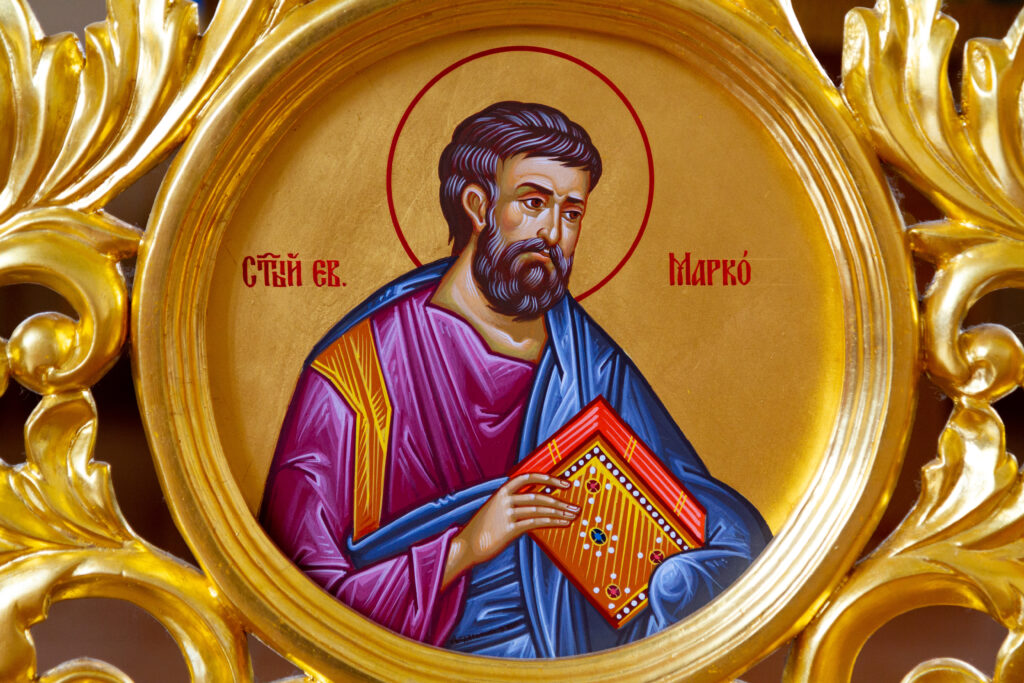By Sister Mary Criscione
The Gospel of Mark is more like a parable than a report: it is pithy and symbolic and challenging. It provokes engagement rather than offering pat conclusions. It begins with a “voice crying out in the wilderness,” and ends with silence fleeing the empty tomb. It is “a finger pointing to the moon” of God’s mystery in Jesus.

“In the wilderness” is an apt setting for beginning such a Gospel. While Mark’s “good news” launches with the forthright naming of Jesus as “Messiah” and “Son of God,” the exact meaning of each of these titles continues to be in question throughout the rest of this Gospel’s story. John the Baptist is presented as the embodiment of the voice in the wilderness promised in Isaiah, one who prepares “the way” of the coming Lord. John prefigures Jesus in several ways: as a prophet, who like Elijah and Isaiah proclaims and enacts God’s message; a reformer who calls for repentance (i.e. a radical change of mind and heart) in anticipation of the greater mystery to come; and as one who goes “the way” of proclaiming, being handed over, and being executed.
So, too, Jesus—who self-identifies as a “prophet” in 6:4—will go “the way” of bold proclamation in word and action, followed by being handed over to and executed by the ruling authorities. Likewise, Jesus indicates that those who would follow him in proclaiming and serving must expect a similar path as well, “the way” of the cross (cf. 8:34, 13:9-12). John pointed to the “stronger one” coming after him; Jesus points to the coming fullness of the reign of God breaking in and taking hold.
Like John who suddenly appeared in the wilderness, so too Jesus makes an initial abrupt appearance, a Galilean in the midst of all the Judeans coming to be baptized by John. Just as he is emerging out of the water, Jesus is depicted as having an equally sudden and profound spiritual experience: he sees the heavens torn apart, receives the Spirit of God descending into him, and hears God’s voice speaking to him alone, “You are my beloved son; with you I am well pleased” (cf. Psalm 2:7, Isaiah 42:17).
Using biblical imagery, Mark presents Jesus’ powerful inaugural experience, receiving his identity and Spirit-empowered mission from the unseen God. But this moment of profound spiritual experience just as quickly splits away to yet more desert: “… immediately the Spirit drove him out into the wilderness” (1:12). The clarity of his baptismal experience gives way to further time in the wilderness, a place of testing and danger but also reminiscent of Exodus liberation and revelation. On the one hand, Satan and wild beasts; on the other hand, ministering angels. Out of this desert will emerge the one who can confidently proclaim the good news of God: “The time is fulfilled, and the reign of God has drawn near. Turn your lives around, and keep having faith in the good news” (1:14-15).
Written for a community experiencing persecution, Mark’s Gospel offers a Jesus who has “been there, done that.” A community facing not only harassment from local and imperial authorities, but also rejection by family and neighbors as well as betrayal/desertion by friends (13:9-13) can find in Mark’s Jesus someone who has walked that same path before them. God ultimately vindicates Jesus, liberating him out of death, and thereby marking “the way” as one that ends not with the cross but with resurrection.
In launching Jesus and Mark’s audience on this story’s way, this Gospel highlights “the wilderness” as its beginning site. Dense with biblical allusions and evocative of multiple meanings, “the wilderness” suggests the many ways in which God’s presence is at once revealed and concealed. The concluding empty tomb scene likewise points beyond itself; the mystery continues to “go before” (16:7) and to go beyond.